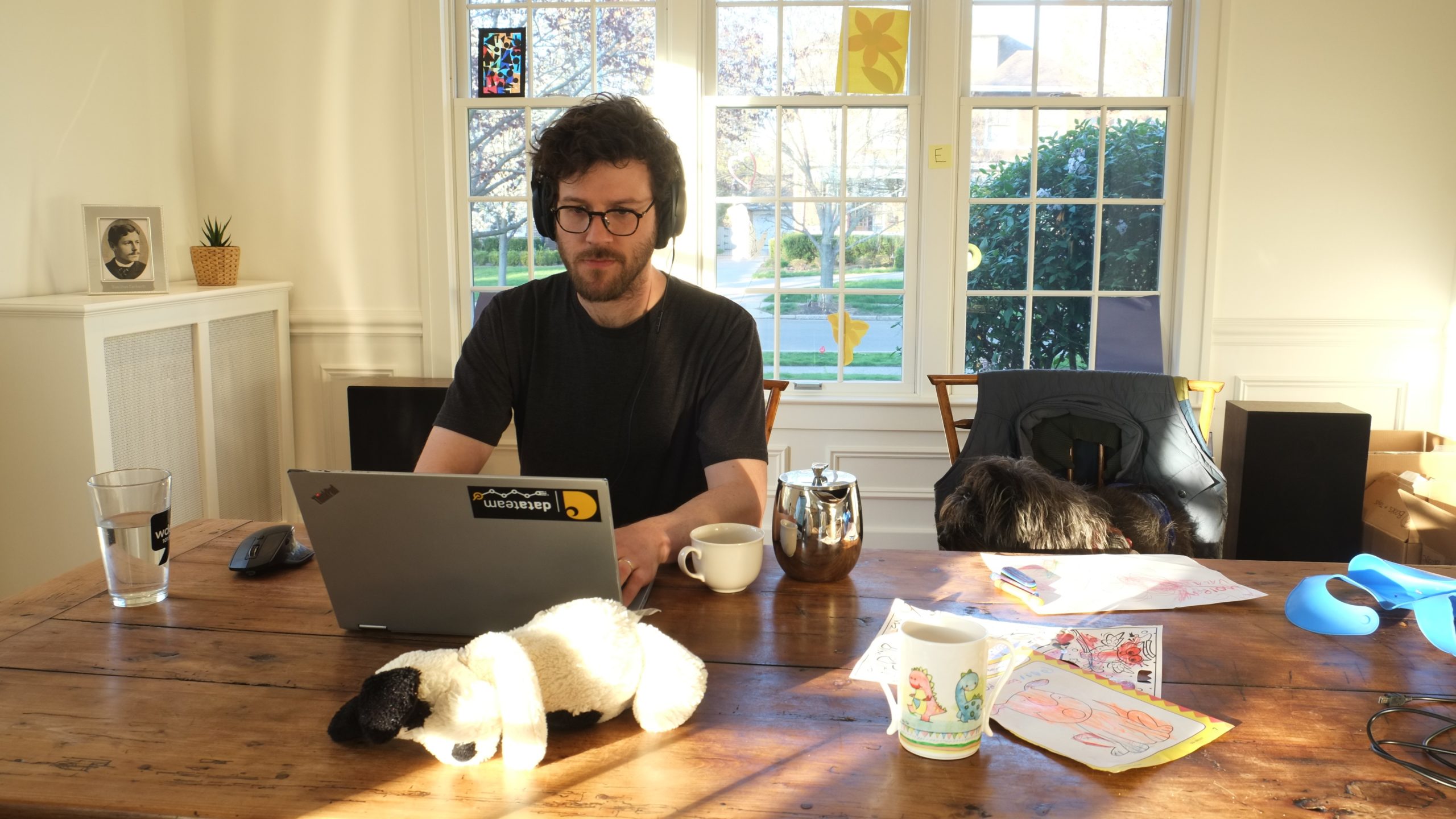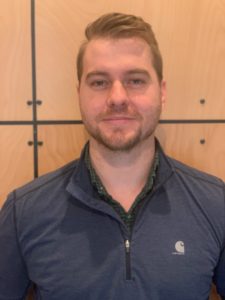When the global health pandemic hit the U.S., Carhartt’s factories quickly switched from crafting rugged workwear to stitching delicate masks and medical gowns.
It wasn’t the first time the 131-year-old company had made such a dramatic shift. The Michigan-based overalls maker bought a cotton mill when World War I broke out so it could produce khaki trousers for U.S. soldiers, and then it made jungle suits for U.S. Marines fighting in the Pacific during World War II, along with workwear for women entering the factories on the home front.
But this time, Carhartt has a new tool to help it succeed amid a crisis: dozens of empowered developers.
As stores and offices closed in March to hamper the spread of the coronavirus, Carhartt software engineers were able to seamlessly transition to remote work while developing new programs and dashboards to help the company make distribution decisions and handle a sudden flood of phone and online orders. Their work highlights a powerful trend: Companies of all kinds are adding software development to their wheelhouse, with more than half of the world’s 20 million software engineers now working outside the tech industry — and bringing the magic that is helping these businesses thrive.
The firms that remove friction and help engineers achieve “Developer Velocity” — efficient innovation — increase their revenue by up to five times as much as those that don’t, according to a recent McKinsey study. They also have 60% higher total shareholder returns, 20% greater operating margins and better scores on customer satisfaction and brand perception.
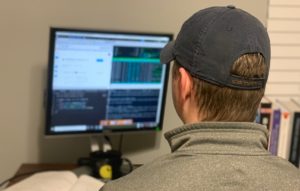
Joe Hagerty can access everything he needs at home to continue writing code and analyzing data for Carhartt.
The most important factors in helping developers achieve more — a central focus of Microsoft’s annual Build conference, held entirely virtually for the first time this year — are tools, work culture, product management and talent management, McKinsey found.
“I am empowered and trusted at Carhartt, so that’s been the biggest driver to the success of all this,” agrees Joe Hagerty, a data scientist who spends about 80% of his time writing code to turn data into usable insights. “When you have roadblocks, you have to expend time and energy to figure out how to get around those. But they’ve empowered me to spin up the resources I need, and that’s been key to getting projects done quickly.”
One such project that has been helpful during the pandemic is an artificial intelligence tool Hagerty and his colleagues built on Microsoft Azure, called “Market Attack.” They’ve been adapting it to help Carhartt sales teams define localized markets and develop different strategies accordingly to help wholesale customers in each area make it through the crisis. It incorporates data including the impact on sales due to store closures, and it helps Carhartt forecast adjusted demand in each specific market.
Just before COVID-19 hit U.S. shores, Kyle Valade, a senior data engineer at Carhartt, had rolled out a new app he built in only two months using Microsoft Azure managed platform services to help the company’s customer service team gather information faster via a consolidated system, reducing call time by 15%. It turned out to be prescient timing; it has helped manage “a huge burst in customer calls” since stores closed as consumers — many of whom do physical labor and are considered essential workers — began purchasing directly from Carhartt.
“We took ideas from the customer insights teams and ran with them, and it’s been one of the more impactful things I’ve done for Carhartt,” says Valade, a descendant of the apparel maker’s founder. “It’s helped the company be more successful.”


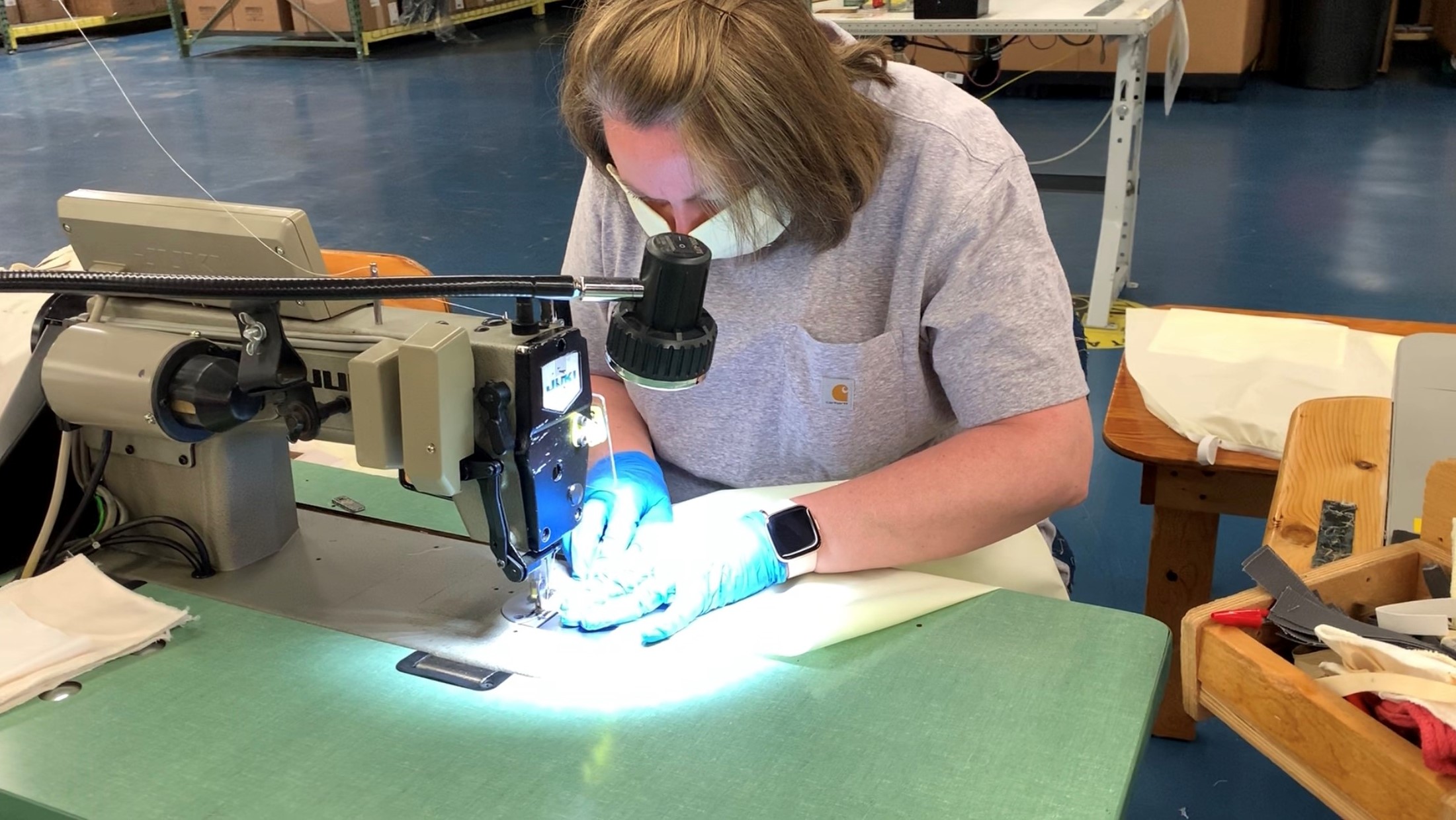
Carhartt began using Azure Data Lake last year, so Hagerty and Valade can log in from anywhere, using any computer, for secure access to their virtual machine setup, with all the tools they need — such as Visual Studio Code — to develop software. Hagerty says work has “actually probably even gotten better” since the company sent employees home in March.
For one thing, he no longer has to factor in time to get from one meeting to the next, which can involve a 10-minute walk skirting hedges around the three buildings at Carhartt’s headquarters. Now he can hop on and off Microsoft Teams video calls with all of the documents and presentations he needs already there within the program, which he says gives him extra time to communicate even more with his colleagues.
Jake Varghese, co-founder and chief technology officer of Optio3, says he’s “old school,” preferring to go to company headquarters every day to help customers, from transportation companies to commercial building managers, solve the problem of remote operations management. But now working from his condo in downtown Seattle, with a view of Puget Sound and the Space Needle and his two dogs at his side, Varghese says he’s been surprised by the continued sense of cohesion among his developers as they shifted to being together in a virtual sense.
“You might not think of Teams as a developer tool, but I most certainly do,” Varghese says. “Teams has been able to remove impediments to collaboration and communication. It’s now our platform of choice, and that will continue once we’re all back in the office.”
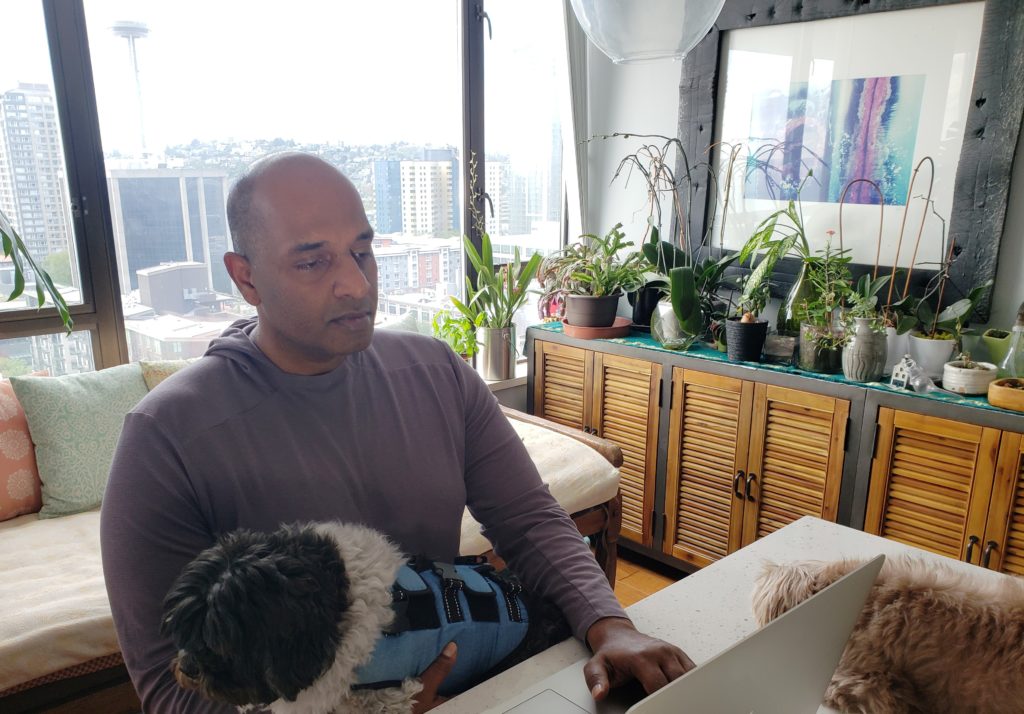
Jake Varghese, co-founder and chief technology officer of Optio3, prefers going in to company headquarters every day. But now working from his downtown Seattle condo, with a view of the Space Needle and his dogs at his side, Varghese says Microsoft Teams has facilitated a surprising sense of cohesion among his developers.
Varghese’s work became even more urgent with the coronavirus outbreak. Optio3 has been helping C&S Wholesale Grocers, the largest grocery distributor in the U.S. with more than 3,000 trucks, gain insight into its operations. A low battery or breakdown en route to a store can mean a half-million-dollar truckload of produce goes to waste — bad news in normal times, but a crisis during the food-shopping rushes of recent months as states began issuing stay-at-home orders.
Varghese and his team, enthusiasts of Microsoft’s open-source programming language TypeScript, use GitHub as their repository to develop and store their code, which Varghese calls Optio3’s “most important output.”
“GitHub is the vault that I’m putting my most trusted currency into, and I need to know that vault will be reliable and secure, and that all the other team members who need to integrate with my code will have access to it,” he says.
Optio3 developers used Azure services and Azure Maps for a cloud solution they put atop solar panels and liftgates, providing advance maintenance recommendations that help make sure C&S trucks are in tip-top shape before they leave a distribution center for a grocery store.
“Everything about this game is preventative and proactive,” Varghese says. “Once the truck is out in the field, it’s too late.”
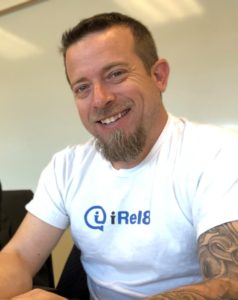
Jeff Dorchester, co-founder of mental-health app iRel8, had the infrastructure in place to quickly begin helping with the emotional aspects of the pandemic.
The pandemic also lit a fire under a completely different kind of project by Jeff Dorchester and Dion Gonzales, the Colorado-based co-founders of mental health app iRel8.
The company already had been working with the All Clear Foundation on a white-label version of their platform, one designed specifically for emergency responders, when COVID-19 “began rearing its ugly head,” Gonzales says. With new urgency, the pair asked Microsoft for help getting the ResponderRel8 app across the finish line, and it launched in April to give frontline workers a safe space to discuss — anonymously — successes and failures in treating people sick with the virus.
Dorchester, the company’s chief developer, also quickly added a pandemic section to the main iRel8 app to give users around the world a platform to share with peers how they’re coping with the crisis.
“The way we structured the code to run through different pipelines to create and deploy the white-label app on Azure, we had the infrastructure in place to quickly pivot when needed to address these situations,” Dorchester says. “And all the cross-team workflow was phenomenal.”
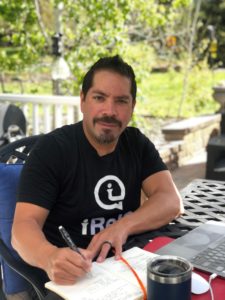
Dion Gonzales, co-founder of iRel8, says digital tools will help the company “adapt to whatever the new normal will look like as we go through the pandemic.”
Late one night, Gonzales logged in to Visual Studio Live Share and was amazed by what he saw: Internal and external developers for iRel8 all working on the same code, at the same time, from different corners of the country, iterating on the fly and testing each other’s work.
“I’m not a developer,” he says, “but I was geeking out for a while watching all the coding and conversations behind it, all flying around and happening in real time.”
The tools that empowered Dorchester to develop a platform for first responders now will help the company “adapt to whatever the new normal will look like as we go through the pandemic,” Gonzales adds. “Different states are opening back up at different times, and what the normal is now might not be relevant in six months, but we’ll be able to quickly adjust to serve those needs for whatever the new normal is at that point.”
At Stack Overflow, Jane Willborn and about 80% of her engineering colleagues around the world had already been working from home in a “remote-first” culture when the New York-based company closed its global offices in March and told the rest of its employees to join them.
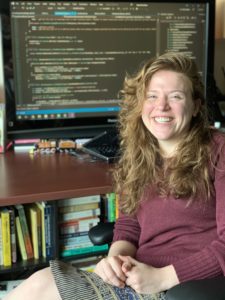
Stack Overflow engineer Jane Willborn is writing new programs to make the site more welcoming to newcomers — a particularly valuable project as the pandemic has forced more coders to work remotely around the world and seek help from each other.
When Willborn started with Stack Overflow in 2018 as a new developer in her first job, coding on Visual Studio from her Seattle apartment with a team spread as far east as Israel made her worried about not getting enough mentorship and help. But her experience with the company’s well-established communication setup helped her relate to one of the biggest projects she’s been tasked with — making it a more welcoming site. Stack Overflow was founded 12 years ago as a forum for very experienced engineers, but the demographics of the users who come to ask questions and get help with coding challenges have since become much more diverse.
Willborn’s project has proved particularly valuable as the pandemic has forced even more coders to work remotely around the world, prompting them to seek help from each other via the site.
“We want to be sure that as the community of developers is changing, the website is changing to help empower people,” Willborn says. “So we’re finding ways to make it easier by developing a new user interface that helps users ask questions the right way, and we’ve seen a better response rate as a result.”
She says her team has also created sidebars that welcome people to the site – built on Microsoft’s .NET Core – and give them better guidance on how to use it, “so even if they’re not familiar yet with Stack Overflow, they can still participate actively and get answers to their questions.”
That type of creativity shows the value developers can bring to companies across a range of industries to help them thrive, build and rebuild in uncertain times.
Valade’s role as a software engineer is something his great-great-grandfather, Hamilton “Ham” Carhartt, couldn’t have imagined. In 1889, Carhartt’s market research and forecasting involved talking directly with railroad workers to figure out what they needed and what he could produce with his two sewing machines — a time-intensive and imprecise process.
“We’ve written a program to automatically forecast how many items of clothing we should make, using machine learning and some other data science magic, along with human input and intuition,” Valade says. “There was a good bunch of groundwork we had to do, because a lot of the technology in the data world is new, and Carhartt gave me the time to work that out.
“And the result has been really good. Everyone is very excited.”
Top image: Kyle Valade works from home in Michigan under the watchful eye of a portrait of his great-great-grandfather, Hamilton “Ham” Carhartt.
Photos of Carhartt’s personal protective equipment and the people making it were provided by Carhartt. All other photos were provided by the people pictured.

